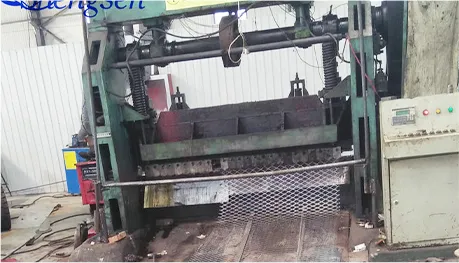-
 Phone:
Phone: -
 Email:
Email:

Understanding Baling Wire Gauge Specifications for Optimal Use and Selection
Understanding Baling Wire Gauge A Guide for Agricultural and Industrial Uses
Baling wire is an essential component in agriculture and various industrial applications, serving primarily in the baling process where materials such as hay, straw, and cardboard are compressed into compact bales for easier handling and transportation. The effectiveness of baling wire directly correlates with its gauge, which refers to the thickness of the wire. Understanding baling wire gauge is crucial for selecting the right wire for specific baling needs, ensuring optimal performance and efficiency.
What is Wire Gauge?
Wire gauge is a standardized measurement that indicates the diameter of the wire. The relationship between gauge and diameter is inversely proportional; as the gauge number increases, the diameter of the wire decreases. For baling wire, common gauges range from 10 to 14, with 12 gauge being one of the most popular choices. Different gauges have distinct characteristics that make them suitable for varying applications.
Importance of Baling Wire Gauge
When selecting baling wire, the gauge plays a pivotal role in determining the wire's strength, flexibility, and durability. Thicker wires (lower gauge numbers) generally provide greater tensile strength and are more resistant to breaking under tension, making them ideal for heavy-duty applications. Thinner wires, while easier to handle and less rigid, may not withstand the same level of stress, which could lead to breakage during the baling process.
For instance, in agricultural settings where the material being baled is heavy and dense, such as alfalfa or wet hay, a thicker, stronger wire is preferable. On the other hand, lighter materials, like cardboard and plastics for recycling, may require a thinner wire to efficiently compress the bundles without excess rigidity.
baling wire gauge

Factors to Consider When Choosing Baling Wire
1. Type of Material The material being baled significantly influences the choice of wire gauge. Heavy materials necessitate a thicker wire to ensure structural integrity, while lighter materials might benefit from a thinner gauge.
2. Baler Specifications Different balers have specific requirements for wire size and gauge. It is essential to consult the baler’s manual or manufacturer guidelines to ensure compatibility with the chosen wire.
3. Environmental Conditions If the bales will be stored outdoors or exposed to various weather conditions, corrosion-resistant wire is advantageous. Coated or galvanized wire options provide additional protection against rust and deterioration.
4. Bale Size The size and weight of the bales produced influence the necessary wire gauge. Larger and heavier bales generally require stronger wires to maintain their shape and prevent breaking during transport.
Conclusion
In conclusion, understanding baling wire gauge is vital for ensuring successful baling operations in agriculture and industry. The gauge of the wire affects its strength, flexibility, and appropriateness for various materials. By considering the type of material being baled, the specifications of the baler, environmental factors, and the size of the bales, users can make informed decisions to select the most suitable baling wire. By investing time in this selection, businesses can enhance their operational efficiency and product quality while minimizing waste and downtime caused by wire failures.
-
Wire Mesh for Every Need: A Practical SolutionNewsJul.25,2025
-
Steel Fences: Durable, Secure, and Stylish OptionsNewsJul.25,2025
-
Roll Top Fencing: A Smart Solution for Safety and SecurityNewsJul.25,2025
-
Cattle Farm Fencing Solutions for Maximum SecurityNewsJul.25,2025
-
Affordable Iron Binding Wire SolutionsNewsJul.25,2025
-
Affordable Galvanized Wire SolutionsNewsJul.25,2025
-
Wire Hanger Recycling IdeasNewsJul.25,2025








